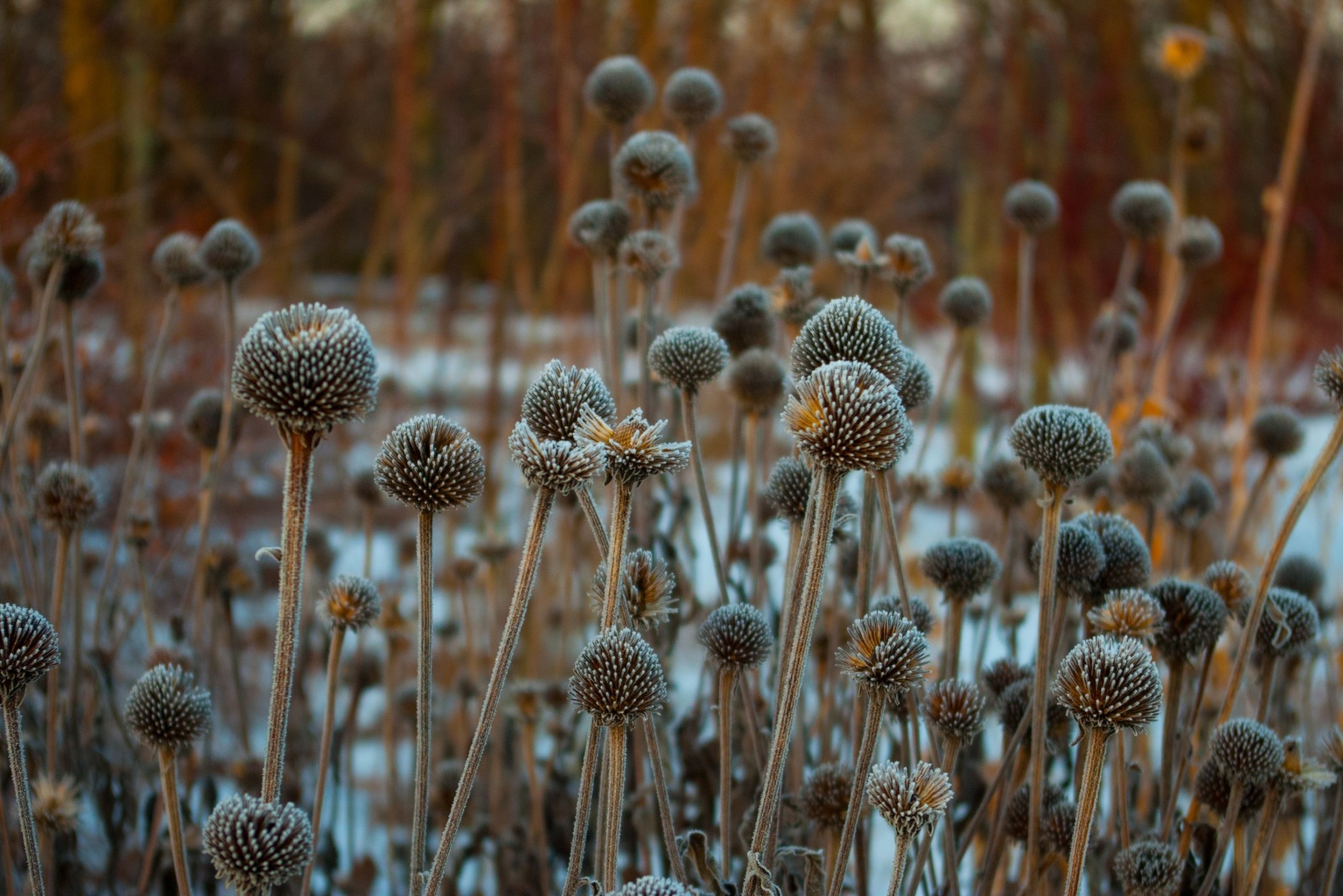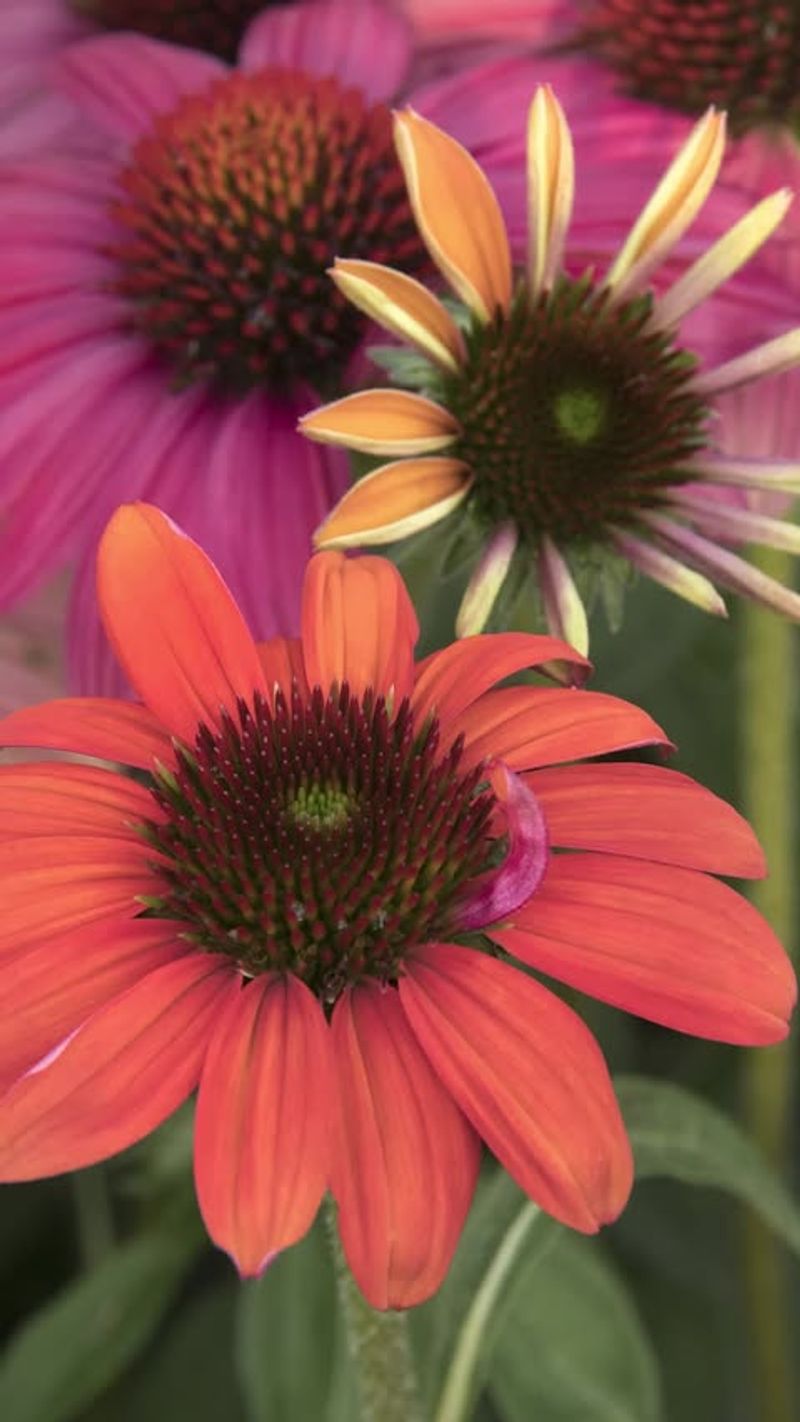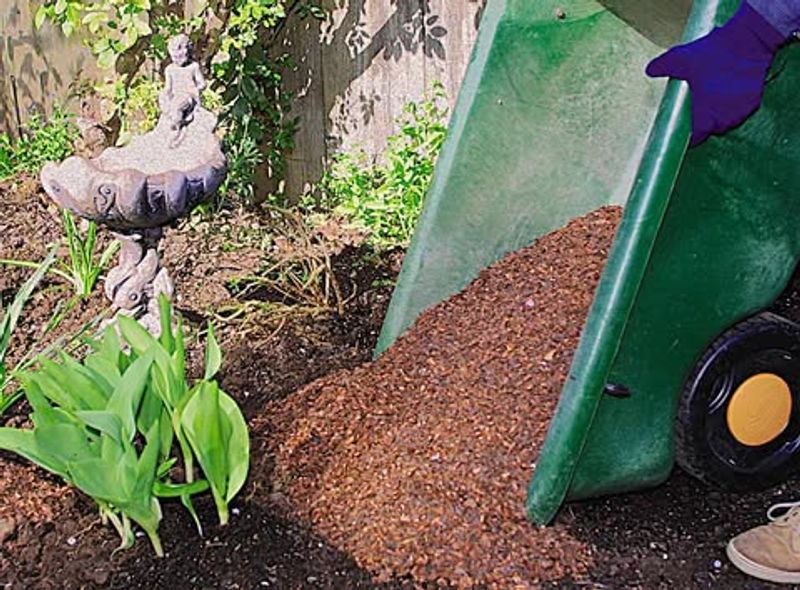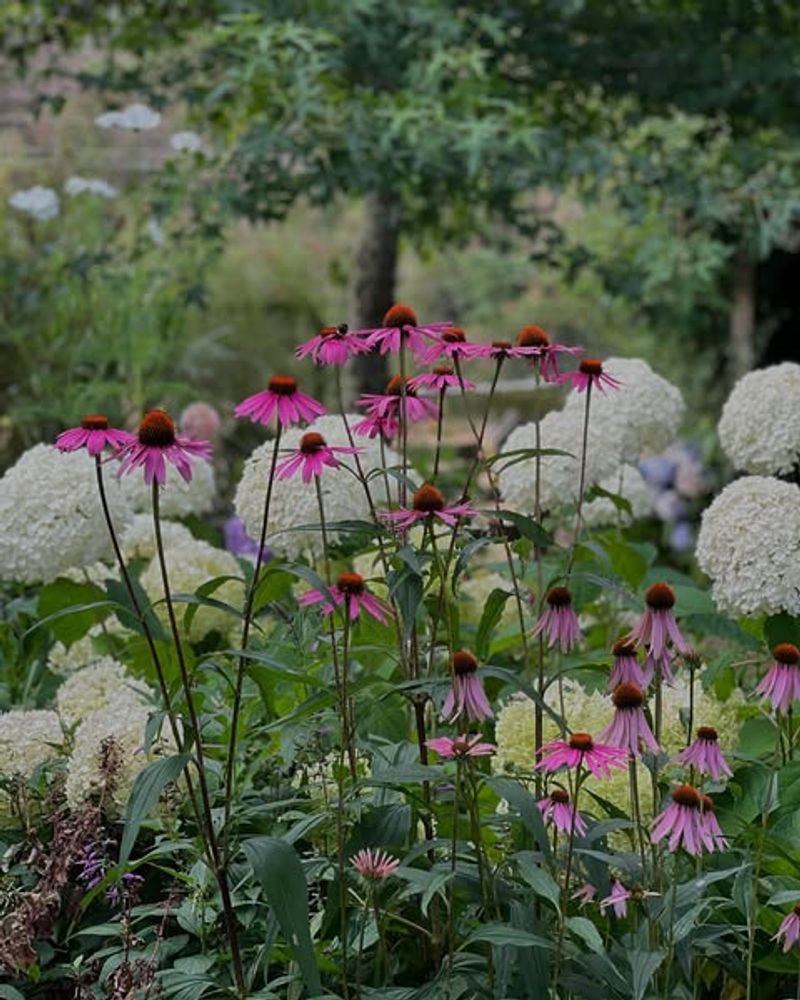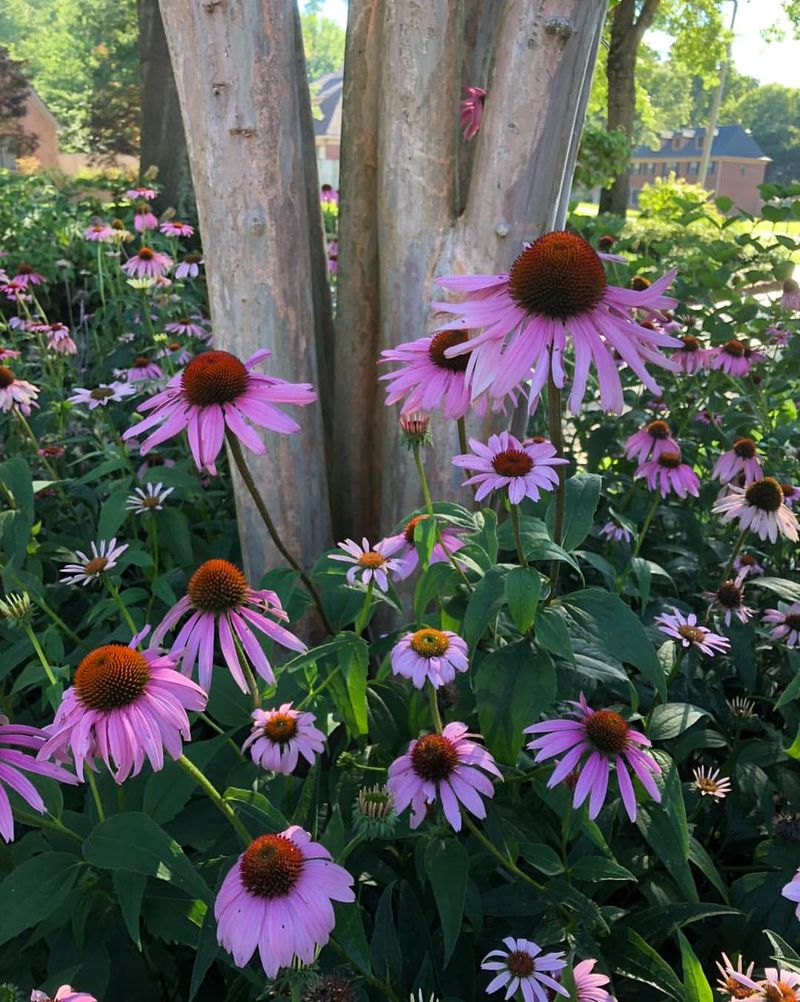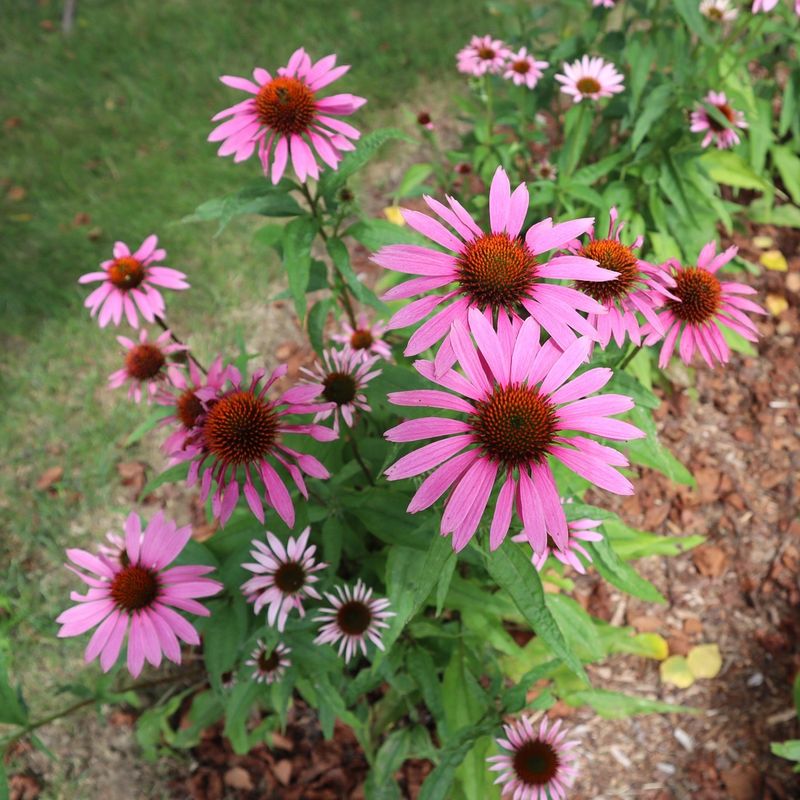Wisconsin winters can be tough on plants, and coneflowers need some extra care before temperatures drop. When the first frost approaches, taking a few simple steps can help your coneflowers survive the cold months and come back strong in spring.
Getting your garden ready now means healthier, more beautiful blooms next year.
1. Stop Deadheading Your Blooms
Late summer is when you should stop cutting off spent flowers from your coneflowers. Leaving the seed heads on the plant serves two important purposes for winter survival.
Birds like goldfinches and chickadees will feast on these seeds throughout fall and early winter. The seed heads also signal to the plant that it’s time to slow down growth and prepare for dormancy, which makes it stronger against freezing temperatures ahead.
2. Reduce Watering As Temperatures Drop
Your coneflowers don’t need as much water once fall arrives in Wisconsin. Cutting back on watering helps the plants harden off naturally before winter hits.
Too much moisture in the soil during cold weather can actually damage roots when the ground freezes. Water only if there’s been no rain for two weeks, and stop completely once the ground starts freezing. This encourages your coneflowers to enter their rest period properly.
3. Add A Layer Of Mulch Around The Base
Once the ground begins to freeze, spread a thick layer of mulch around your coneflowers. Use about three to four inches of shredded leaves, straw, or wood chips.
Mulch acts like a blanket that keeps soil temperatures more stable throughout winter’s freeze-thaw cycles. Wait until after the first hard frost to apply it, so mice and other small animals don’t nest in the warm mulch before winter truly arrives.
4. Leave The Stems Standing Through Winter
Resist the urge to cut back your coneflower stems in fall. Standing stems provide important shelter for beneficial insects that help your garden thrive.
Ladybugs, native bees, and other helpful bugs overwinter in hollow plant stems. The stalks also catch snow, which creates additional insulation for the plant’s crown and roots. You can trim everything back in early spring once new growth starts appearing at the base.
5. Check For Good Drainage In Your Garden Bed
Coneflowers hate sitting in water during winter months. Before the ground freezes solid, make sure your garden bed drains well after rain or snow melts.
Standing water around roots can cause rot and kill plants during winter. If you notice puddles forming, consider adding compost or sand to improve drainage. Raised beds work wonderfully for coneflowers in areas where drainage is consistently poor throughout the year.
6. Skip The Fertilizer After August
Stop feeding your coneflowers by late summer to help them prepare for winter rest. Fertilizer encourages new tender growth that won’t survive freezing temperatures.
Any soft new shoots produced in fall will die back when frost hits, wasting the plant’s energy. Your coneflowers need to toughen up their existing growth instead of producing delicate new leaves. Save fertilizing for spring when active growth begins again and temperatures warm up consistently.
7. Divide Overcrowded Clumps In Early Fall
If your coneflowers have become crowded, early September is the perfect time to divide them in Wisconsin. This gives roots six weeks to establish before hard frost arrives.
Dig up the entire clump and use a sharp spade to separate it into smaller sections. Replant divisions at the same depth they were growing before, water them in well, and they’ll be ready for winter. Healthy, properly spaced plants survive cold weather better than overcrowded ones.

